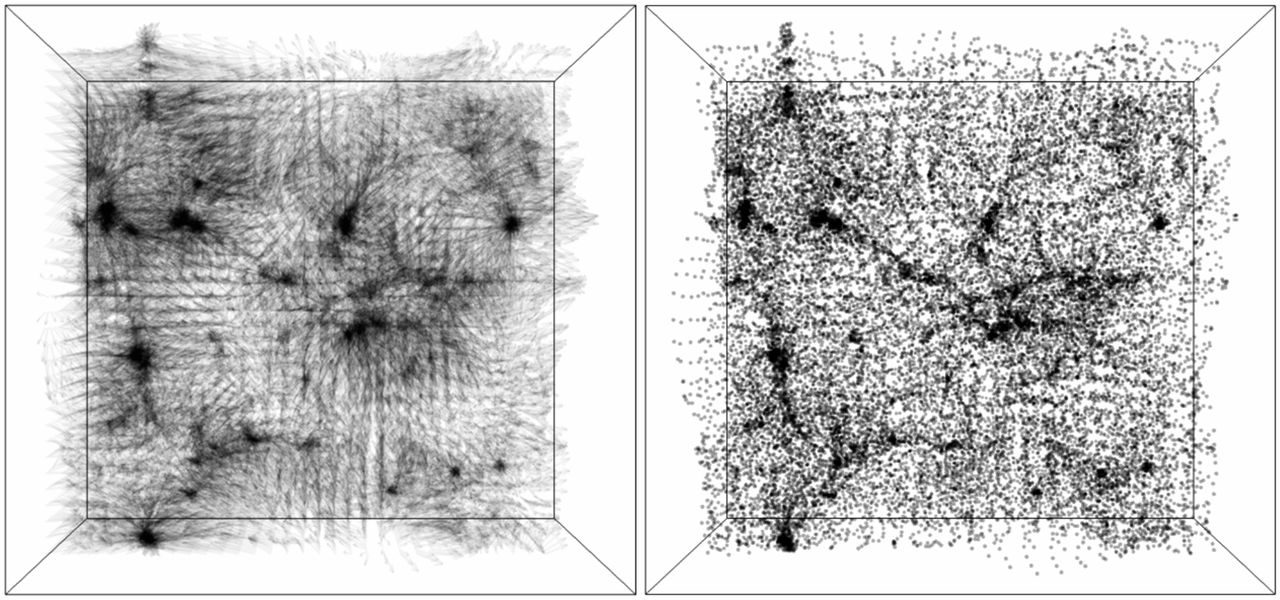Artificial intelligence has many applications, and for a while now, mapping and describing the universe have been some of them. Now a group of astrophysicists used artificial intelligence to generate 3D simulations of the universe and dark matter. The results are so accurate that the creators of the algorithm don’t even know how it works.
“We can run these simulations in a few milliseconds, while other ‘fast’ simulations take a couple of minutes,” study co-author Shirley Ho of the Flatiron Institute and Carnegie Mellon University said in a statement. “Not only that, but we’re much more accurate.”
The artificial intelligence algorithm is called a Deep Density Displacement Model, or D3M for short, and it’s believed to be incredibly accurate and fast in simulating the universe and dark matter. Scientists believe it successfully generated how much of the cosmos consisted of dark matter, even though there was no training data to support its discovery.
“It’s like teaching image recognition software with lots of pictures of cats and dogs, but then it’s able to recognize elephants,” Ho said about the study published in the Proceedings of the National Academy of Sciences. “Nobody knows how it does this, and it’s a great mystery to be solved.”
The study was led by Siyu He, an analyst from the Flatiron Institute. Ho and He collaborated with Yin Li from the Berkeley Center for Cosmological Physics at the University of California, Berkeley and the Kavli Institute for the Physics and Mathematics of the Universe in Tokyo.
The development of AI-generated computer simulations such as D3M will create essential tools for theoretical astrophysics. Studies of dark matter and dark energy and how they affect the universe require thousands of simulations which can take too long to calculate without a fast, accurate algorithm such as D3M. Researchers believe the algorithm shows how gravity gives shape to the universe.
To develop the algorithm, the researchers used deep neural networks which were fed over 8,000 different simulations provided from one of the most accurate universe models available. The neural networks use training data to make calculations which deliver accurate results.
After the training, researchers ran simulations of a box-shaped universe which stretches 600 million light-years across and then compared the results to slower and faster universe models. What baffled researchers was that D3M could create a simulation of the universe and dark matter in just 30 milliseconds.
The researchers compared the results from D3M to those from another high-accuracy model and found that D3M had a relative error of 2.8%, which makes its results quite accurate for the amount of training it received.
“We can be an interesting playground for a machine learner to use to see why this model extrapolates so well, why it extrapolates to elephants instead of just recognizing cats and dogs,” Ho said. “It’s a two-way street between science and deep learning.”





